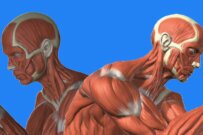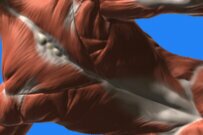The sciatic nerve is the largest, thickest nerve in the human body. This nerve begins with its nerve roots in the lumbar spine and continues through the glutes (yep, your butt), with nerve endings down the back of the thigh. The nerve divides above the back of the knee into the tibial nerve and the common peroneal nerve, both of which serve the lower leg and foot.
Many are familiar with the pain caused by irritation of the sciatic nerve known as sciatica. This pain radiates along the path of the sciatic nerve, which branches from your lower back through your hips and buttocks and is usually felt at the back of the thigh. Sciatica is most commonly the result of a disc herniation directly pressing on the nerve, however any irritation or inflammation of this nerve can reproduce the symptoms of sciatica. Symptoms of sciatica usually affect only one side of your body.
Sciatica is diagnosed with a medical history and physical exam. Your doctor will ask you questions about your symptoms and may be able to diagnose sciatica just by asking you these questions that you have sciatica, however X-rays and other tests (such as MRI) are sometimes done to help find the cause of the sciatica. If the cause is a herniated disc or bone spurs on the spine, then Chiropractic or even surgery may be required, but if tests show no problems with the spine then the cause is usually a tight piriformis muscle. If this is the case, then the sciatica can be treated with Neuromuscular massage.
Sciatica will sometimes improve and go away with time. Treatment for sciatica often depends on what is causing the nerve irritation. Medication and physical therapy are common treatments for sciatica along with steroid injections and surgery for extreme cases.
Have you ever suffered from sciatic pain? If so, what was the most effective treatment for your symptoms?





